An interview with Mick McEvoy, manager of the Upper Hamlet Happy Farm, about the challenges of bringing mindfulness to farming, the magic of growing your own food, and future plans for ecological healing through rewilding.
Could you tell me a little bit about the purpose and aspiration of the Happy Farms in Plum Village?
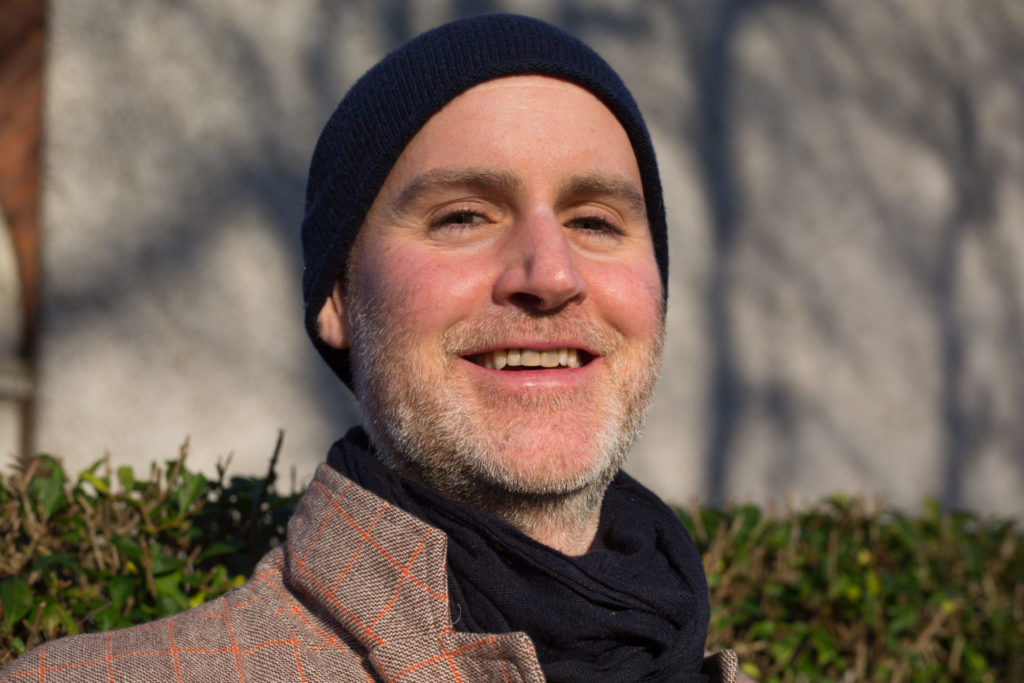
We often talk of the Happy Farm having three pillars. One of them is growing food: really nutrient-dense foods, organic, seasonal, obviously local, because we’re here less than one kilometer from the Upper Hamlet dining hall. We produce a lot of crops that are highly valued in terms of what we can purchase from our own budgets. At the moment, for example, we’re harvesting kilos and kilos of asparagus, which is very expensive to buy. The best quality food you can eat is the food you grow at home yourself.
What’s the significance of the food being organic?
We know that modern agriculture, which feeds the world, unfortunately is an industrial system. There are a lot of extra elements that are really unnecessary and not so good for our health and also not so good for Mother Earth and all the life that lives on the land and within the soil where the food is produced. We know about the plight of the bees and the pollinating insects due to chemicals like insecticides, pesticides and herbicides that are added in the big mainstream farming systems that we have.
We are very concerned with the concept and application of interbeing as Thich Nhat Hanh teaches. We care for the ‘more than human being’ life that is here on land. The soil is super alive, we try to have respect and reverence for the soil, as well as respect and reverence for the humans that are eating the food that we produce. That’s why we go even beyond organic.
How do you go beyond organic?
Five years ago we made the decision to stop the annual process of tilling or rotavating the soil in spring to prepare the soil for planting. Now we practice the method of cultivation known as no till or no dig. This method lets the soil structure heal and prevents the destruction of innumerous soil organisms and soil life. As a result we are building deep and healthy soils year by year. The process of tilling is responsible for the generation of huge amounts of carbon emissions globally every year. Our soils are now becoming carbon sinks. They are sequestering carbon. For me this is beyond organic.
Going back to the pillars, what are the other ones?
The first one is the production of beautiful food, the second is community living. We have a core team who live as a Happy Farm family within the monastery as well as being part of the wider community. Also, at different times of year we welcome shorter term volunteers. It’s a skill and a challenge to live in community because there are a lot of joys, but there are also lots of challenges. For anybody who’s worked with a team, we know there’s a lot of richness and learning. We talk so much about harmony and community in Plum Village. It’s a messy but beautiful journey of working and living together. That’s the second pillar.
The third one is education. The project exists also to inspire and to educate people in a very pedagogical way, with learning by doing rather than a more theoretical or classroom-based form of learning. People who come to the farm for the one year program go through the whole cycle of seasons from seed to plate and beyond. They go away after the year with skills to start growing some of their own food or set up some of their own projects, which many people have done in different parts of the world. When Plum Village is open to guests, during some retreats people can join us for shorter periods and experience that particular season.
The other element that feeds into the education pillar is the mindfulness practice, and that really is the key to everything in Plum Village. Education is also learning mindfulness in a working environment. It’s a super hard challenge. We uncovered this quote from Ram Das which says in terms of service that if you finish your service and you don’t feel lighter, clearer, higher, and happier, then you’re doing it wrong.
This idea of the Happy Farm and the happy farmers, it’s not that we have to be fundamentalists in happiness: all emotions are welcome, all human experience is welcome in our inner landscape. It’s about taking that out onto the land, taking it into the working environment, with the stresses and pressures that we all experience, taking it into the team dynamic, the family dynamic and learning to communicate and to listen to another’s needs. To do our inner work and our own healing, but also to be there for the work that needs to be done for the food production. This is the idea of mindful living in day-to-day life.
Integrating mindfulness into work is a big challenge. You’ve had a few years of experience of that in Plum Village. Can I put you on the spot and ask, what’s your biggest learning related to that?
I think for me, it is dealing with the fear of conflict. In my role to lead or to manage the team, I have a deep aspiration and volition for everybody who crosses the threshold of the farm to have a meaningful and positive experience. Sometimes I try to ‘people please’, I try to make sure that everyone is happy on the Happy Farm. It’s been valuable to have the mindful awareness that I actually can’t become responsible for other people’s emotional experience or how they are in day-to-day life. They’ve come with their whole story and their whole life. The learning for me is to meet them where they are and to assist them, like holding their hand as we walk together forwards during the little time that we spend together on the farm and not to try to fix them. And then also to be ok with all of those emotions that are within me.
The other thing is to accept that even here in the headquarters of Engaged Buddhism, this monastery created by Thich Nhat Hanh which is world famous for mindfulness, every day I still feel pressure and stress. I judge myself and I judge others within the team during our work, during our service. So all those old habit energies I experienced in my working life before are also here, it’s not like they don’t exist because I’m in some Buddhafield here. They are there and I still have to shine a little light of mindfulness and awareness and compassion for myself and often for others. It’s a big struggle, but it’s a challenge to come back to, moment to moment, day to day.
If people are inspired to get involved with growing food, putting their hands in the soil and maybe lots of people are living in a city and an apartment in a flat, do you have any advice about what people could do, where they could start?
If you’re like us, and are in the Northern Hemisphere, we’re in mid-spring, summer is not that far off and at the moment here on the farm all our little polytunnels are full of our seedlings, waiting to be transplanted outside after the last frost. We’re ready, we’re starting to plant. Now is the time of year to think about it, if you want to grow something. Whether you live in an apartment and have the balcony, or live in a suburban house with a small garden, or if you’re lucky enough to have an allotment or a small holding in the countryside, I think the best thing is to start small. Something happens, which is quite beautiful, when we start to grow, it could be a radish, it could be some lettuce, it could be a tomato plant. Just the experience of cultivating that plant and then eating the food you’ve cultivated yourself is special.
In our society, we can have a real apathy around our food, where we can go into supermarkets and shop or even do our shopping online and click and it’s just delivered. We don’t see the processes, we have no engagement with the soil and the seeds and the seasons. There’s an apathy where food is just available 24/7 every day of the year but in the magic that happens with cultivating a little bit of our food, I think that apathy can transform and become empathy. We can go from food apathy to food empathy which is borne by that journey of growing. It’s really tangible. It’s really real for everybody who’s embarked on a little bit of growing. You don’t need to be self-sufficient, we aren’t self-sufficient in this community with our food growing.
So start small, choose something that you like to grow! (My sister started to grow something that she didn’t like. She grew these beautiful cauliflowers which are quite challenging and then she told me that she doesn’t like to eat cauliflower!) If you like to have a bit of salad with your meal once in a while, some mixed salad is really easy. It can be as easy as a little container with a little bit of compost that you can get quite easily from the garden center and then sprinkle the seeds just like you would salt on your dinner. Keep it watered, you need a little bit of light, a little bit of water and just a little bit of love and care. You can grow a little bit of your own food, so grow what you want to eat, start small and then scale up after that.
Can you tell us a little bit about the future aspirations for the Happy Farm?
During the pandemic we haven’t been able to host guests and that has given myself and the community around the Happy Farm, the opportunity to step back and really reflect on what is the real meaning, what is the real purpose of the farm. We moved away from getting caught up by wanting to cultivate just a little bit more, to offer just a little bit more food. We came to the realization that it’s not about the carrots, it’s about the collective awakening. It’s coming back to the spirit of bringing our mindfulness practice, our spiritual practice, our practice of a family, siblinghood, manifesting joy, manifesting harmony and having fun – the element of play, into the farm.
More and more now it becomes clear as the farm matures that we are in such a beautiful setting; we have mature oak forest on one side with a beautiful wetland on the other. We are very fortunate. We also have a very species rich grassland, a wildflower grassland. The existing ecology, like I mentioned before, the ‘more than human beings’ that we share the land with, are showing themselves every year as the site develops and maybe actually has healed a little bit from when we first made an intervention onto the land as farmers.
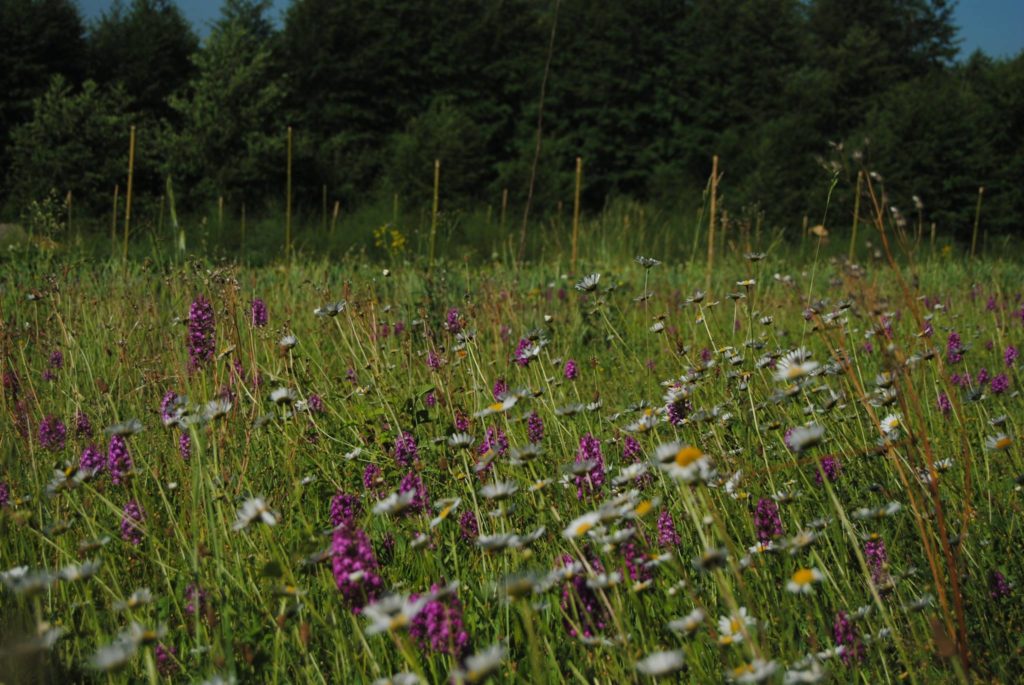
The community in Upper Hamlet have acquired more land, which is old agricultural land adjacent to the farm and pockets of mature, native forest. Together with the monastic community and residential community, we have a plan for what we call rewilding some of that land. These fields that were cultivated every year, that were tilled, that gave copious amounts of wheat, sunflowers and other crops now are just healing. The soil is healing. It’s closing over and it’s going from wildflower meadows in the first few years to the first few oaks and elms, field maples, wild roses, blackberries, they’re all re-manifesting in these fields.
Together with the community, we have a plan to reforest a significant amount of that land. Most of that will be done through natural regeneration, relying on the capacity for the Earth to heal herself. This forest will actually come from the existing pockets of woodland and seed itself. It is happening. The wild animals, like I say, the ‘more than humans’, that share the land, like the numerous wild boar are like ecological engineers for us, they use their tusks and their nose to break open the soil and leave bare patches of soil where the seeds of many of these pioneer tree species are rooting in. We’re helping nature, for example we’re helping to exclude the deer who graze off some of this regeneration but we’re doing it in partnership and very much letting nature, Mother Nature, lead. Our role as human beings is to get out of Mother Nature’s way and help only when needed.
When Plum Village reopens, opportunities will manifest, in our time of climate and ecological emergencies, to engage our visitors and to engage our community in ecological retreats, where we will be able to go out onto these lands and take our mindfulness practice there. Guests will be able to help plant some more native trees to restore the ecosystem and ecology and be part of that healing.
Further down the road we may have the potential to develop a small but considerable portion of land for what we call agroforestry. That’s an old style of forestry that exists in places like Spain traditionally, where you have cereal crops growing in avenues between trees like walnuts, or hazelnuts, or apricots or apples and many more combinations. So the two coexist. We will probably work with the partner farmers in the region. Again, it’s all in the spirit of organic cultivation. It’ll be a small production. We could also grow soya, we make tofu here, but it’s from soybeans that are grown elsewhere in France. We can grow wheat, we could grow our own spelt, our own rye as we have a wood fired bread oven. We want to start to close the circle a little bit and produce more here for our community in our community. It’s a long term project but very much done with the spirit of bringing in that reverence for those beings that we share the land with, not that that reverence wasn’t there before, but to really bring that spirit further into our collective consciousness on the farm and in the community.
You can find out more about the Happy Farms on their website.
There is a newly formed monthly online Happy Farmers Sangha. This is online space of practice for friends who grow food or who aspire to grow food to come together to connect and support each other. You can get invitiations to the sessions by signing up to the mailing list here.


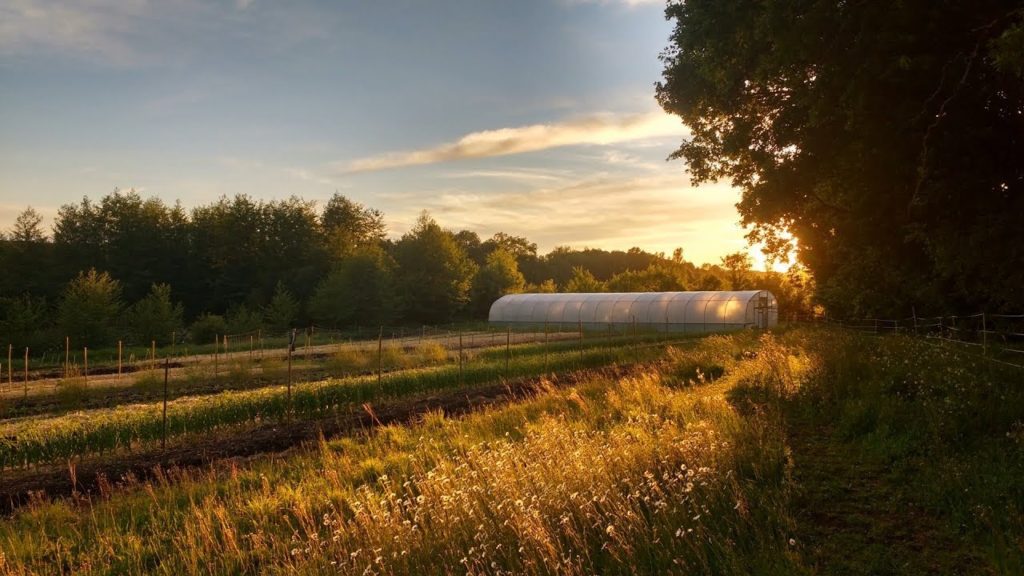
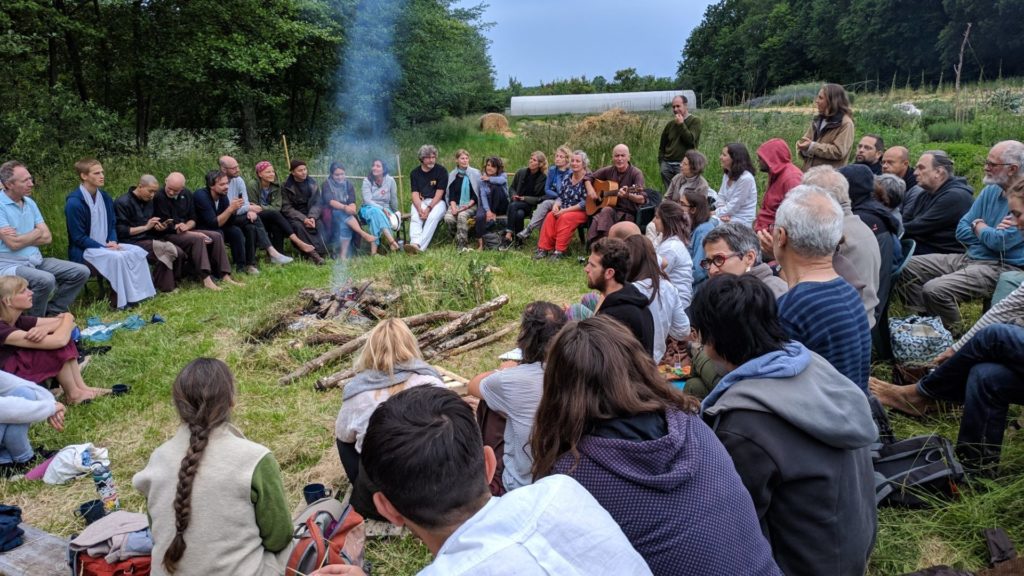
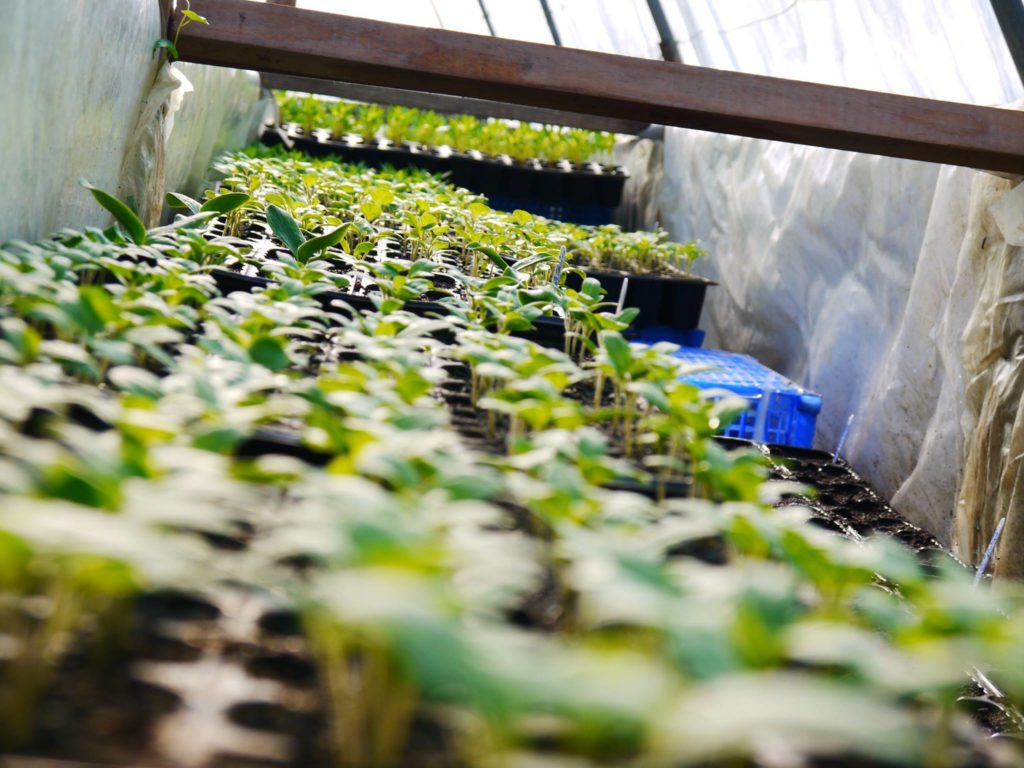
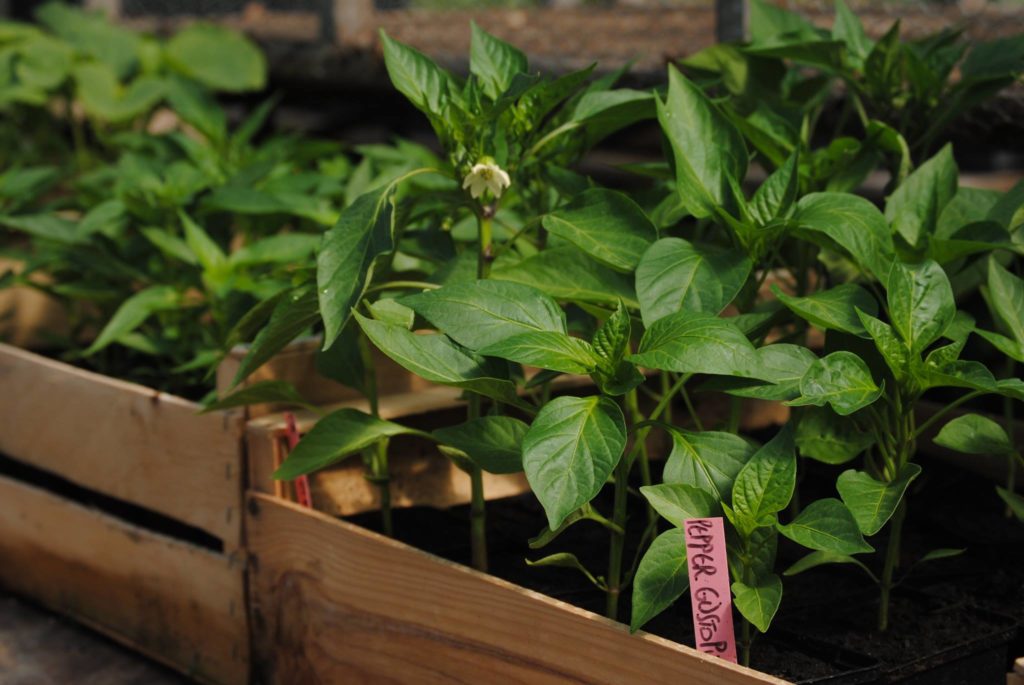
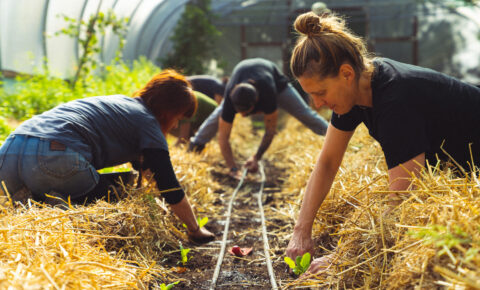
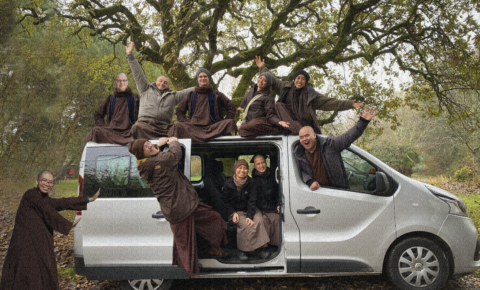
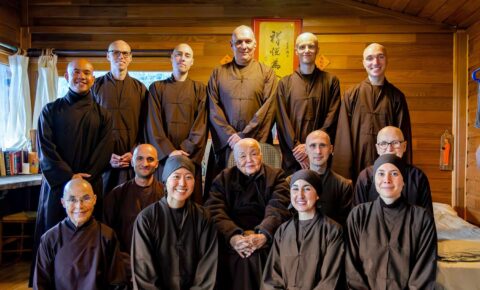
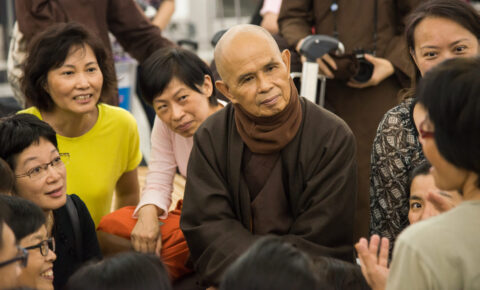
Join the conversation